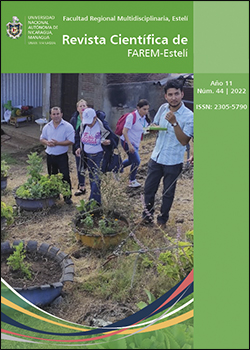Adoption of water resources technologies and climate change adaptation measures in the Aguas Calientes Sub-basin, Madriz 2022
DOI:
https://doi.org/10.5377/farem.v11i44.15691Keywords:
Technologies, adaptation measures, sub-basin, water resources, climate changeAbstract
Water is an indispensable resource to maintain the life of natural ecosystems; as well as the productive activities that guarantee resources for humans. Adaptation to climate change is a fundamental factor to consider in the different initiatives of productive development and Integrated Water Resources Management (IWRM). The objective of this research was to describe the process of adoption of technologies and adaptation measures for the use and development of water to reduce the negative impacts of climate change in producing families in the NSC. The study is descriptive and cross-sectional in nature, applying qualitative methods such as: focus group discussions, semi-structured interviews and participant observation. The results indicate that 3 adaptation measures and 14 types of water resources technologies have been implemented, distributed as follows: 3 rainwater harvesting, 7 runoff water retention and storage and 4 water optimization-reuse. The process began with the collection of relevant primary and secondary information from key stakeholders and field visits to identify the technologies in the area. It was concluded that rainwater harvesting technologies have been the most effective in the upper and middle zones of the sub-basin, but runoff water retention and storage technologies have not been very efficient due to the conditions of the terrain, and water optimization-reuse technologies are little used. On the other hand, the community members consider the economic and environmental costs they represent to be important.
Downloads
418
HTML (Español (España)) 113
Published
How to Cite
Issue
Section
License
Copyright (c) 2023 Revista Científica de la FAREM-Estelí

This work is licensed under a Creative Commons Attribution-NonCommercial-ShareAlike 4.0 International License.
© Revista Científica de FAREM-Estelí

